The 10 Smallest Domesticated Cat Breeds In The World
This page contains affiliate links. We may earn money or products from the companies mentioned in this post through our independently chosen links, which earn us a commission.
If you are the type of cat owner who wishes your fur baby would stay kitten-size forever, we have good news for you. There are several domestic cat breeds that are on the smaller side, and some even weighing in at 5 pounds or less!
What Breed Is The Smallest Cat?
To help you in your search for a purr-fectly compact size kitty, we have compiled important information about the origins, characteristics and personality of 10 smallest domestic cat breeds.
#1 Singapura
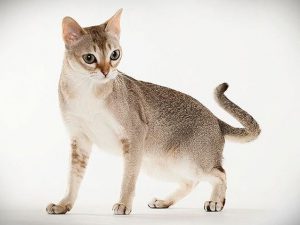
- Adult Weight: 4-5 pounds
- Height: 6-8 inches
- Lifespan: 11-15 Years
- Physical Characteristics: Come in Sepia-toned fur only; large saucer eyes; bands of light and dark ticking, ending with a dark tail
The origin of the smallest breed of cat in the world is a bit confusing and controversial. Singapore Tourist and Promotion Board researched the cat’s history because it wanted to use the breed as a mascot for the southeastern Asia sovereign island. During that research it came to light that the first cats had actually been brought to Singapore by a couple from the United States. It is now believed the Singapura is a cross between a Burmese and Abyssinian and was originally bred in the United States.
Despite the controversy of the breed’s origin, The Cat Fanciers’ Association made the Singapura a natural breed. Also, the Singapore Tourist and Promotion Board decided in 1991 to use this breed as its tourist mascot. In Singapore, they call the cat a kucinta, which is an amalgamation of the Malay words kucing (cat) and cinta (love).
The Singapura is the smallest domestic cat breed, with adult females weighing as little as four pounds while males can top out at just eight pounds. This breeds size isn’t the only notable physical characteristic, they are known for their saucer-sized eyes outlined in black, oversized ears, and unique coloring.
This breed only comes in one color which is a singular, sepia-toned coat with at least two bands of dark ticking separated by light bands, ending with a dark tip. The cat’s muzzle, chin, chest, and stomach is a lighter beige.
The Singapura is high-energy, curious, intelligent, and frisky cat who craves attention from her owners. They are muscular little cats who love to climb and explore. They also want to be in the by right by your side in the action and are always ready to play.
#2 Munchkin
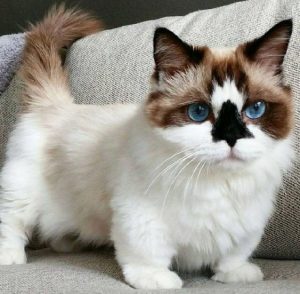
- Adult Weight: 6-9 pounds
- Height: 5-7 inches
- Lifespan: 12-16 years
- Physical Characteristics: May come in all color combinations and coat styles; May have plush medium-density coats or silky smooth fur; Normal looking cat size with very short legs;
The Munchkin is a relatively modern breed, only becoming established during the 1980’s. Reports of short-legged cats have appeared as early as 1944 in Britain, in 1956 in Russia, in 1970 in New England, and in the 1980s in Louisiana. A stray cat named Blackberry, was found 1983, and was the mother of the Munchkin breed. She and one of her male kittens, were outcrossed to domestic cats to ensure a diverse gene pool.
The Munchkin’s short legs came from a genetic mutation in the founder cats of the breed. This is sometimes associated with a range of hereditary and inherited health problems within the breed as a whole. Munchkin cats come in all color combinations, coat styles, and can be hairless, short haired, or long haired. Short-haired Munchkins have plush medium-density coats, while long-haired Munchkins have silky smooth fur. Popular coat shades and patterns of this breed are tabby, calico, gray, and solid black.
Munchkin’s are quick, fun-loving, energetic and affectionate little cats. What they lack in leg height they make up for with their unique look and affectionate temperament. They can often be seen sitting up on their back legs to look out a window or see over furniture. The Munchkin is highly intelligent and can be taught tricks and rewarded with treats.
#3 Devon Rex
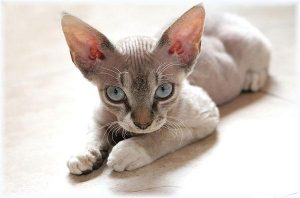
- Adult Weight: 8 pounds
- Height: 7-8 inches
- Lifespan: 9-13 years
- Physical Characteristics: Short, curly fur; colors include White, Blue, Black, Cream, Red, Brown, Frost, Platinum, Fawn, Chocolate, Chestnut, Cinnamon, Lavender, Champagne, Seal; Triangular head; Short curled whiskers
In Devon England, Beryl Cox saw pictures of this cat in local newspapers. She was interested because she lived near an old tin mine where a colony of cats with curly coats lived. Although the mother was a straight haired barn cat, this kitten had curly hair. This cat was names Kirlee and he became famous as the beginning of the breed known as the Devon Rex.
Breeders first thought that the curly coat of both the Cornish Rex and the Devon Rex might be related and the two could be bred to each other. This breeding was attempted, but every time the resulting kittens all had straight coats. The curly coated cats were determined to be two distinct breeds. So, breeding a Devon Rex cat with a Cornish Rex cat will result in a cat with normal, non-curly coat, as the gene for each coat mutation itself will not be dominant when crossed with another different gene.
The Devon Rex has an unusual appearance with a triangular head and a nose that appears to change direction right below the eyes. The eyes are large and the ears are extremely large, set low on the head with a wide base. The butterfly-like ears, along with the other distinct facial features, gives this breed a look like that of a pixie or elf.
The Devon Rex’s soft and curly is also unusual and many lack fur in some areas, especially those areas where licked. The coat is very fragile and even grooming can cause the fur to break off completely. Devon Rex’s also normally have broken whiskers because they are also fragile.
The Devon Rex is an active, energetic breed who loves attention. They are known for being silly and entertaining with playful performances. The Devon expects to be appreciated with lots of affection and loving attention and will return it with purring.
#4 American Curl
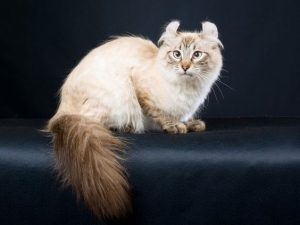
- Adult Weight: 8-12 pounds
- Height: 6-8 inches
- Lifespan: 9-13 years
- Physical Characteristics: Short, silky, smooth hair; Colors include White, Blue, Black, Red, Cream, Chocolate, Lilac, Silver, Golden, Tortoiseshell, Buttercream, Brown; Patterns can be solid color, Tortoiseshell, Bicolor, Tricolor/Calico, Tabby, Ticking, Smoke, Shaded, Points; Large ears that curve in a smooth arc of at least 90 degrees
In 1981 in California, a kitten was found by Joe and Grace Ruga. This kitten had the unique characteristic of having ears that curled backwards. The Rugas kept the kitten and named her Shulamith, who became the foundation of the American Curl breed. When Shulamith had kittens, two of them also had the same curled ears. In addition, one of the kittens with the curled ears was a shorthaired cat instead of exhibiting the longer coat like the mother, Shulamith.
Shulamith and her remarkable kittens soon came to the attention of the cat fancy and the breed, called American Curl, began to attract people who were interested in breeding and exhibiting them. The breed became recognized for exhibition in the championship class at cat shows.
The head of the American Curl is wedge shaped with eyes that are shaped like a walnut. They are well muscled with a long tail. The unique feature, of course, is that the ears curl backwards. The ears are large, and curve in a smooth arc of at least 90 degrees. The tips of those ears should be flexible and can be handled without any complaints from her.
The coat texture of the American Curl is silky, whether it have short hair or a long hair. The hair length on the long haired curl is really more semi-long than long. The American Curl can be found in all colors and patterns.
The American Curl is a lively cat who is very interested in people. This breed enjoys daily exercise and loves cat trees with perches for climbing and jumping. They also like interactive play and bonding with their owners. They may not be considered a “lap cat,” but the Curl likes to be next to people.
#5 Balinese
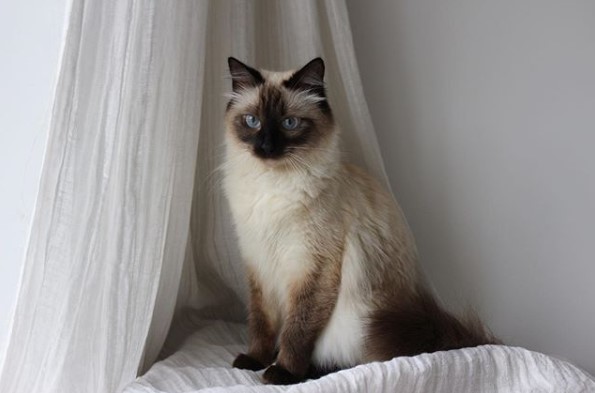
- Adult Weight: 8-12 pounds
- Height: 6-9 inches
- Lifespan: 8-13 years
- Physical Characteristics: Long, tubular body; Deep blue, slanted eyes; Medium length silky hair; Colors include: Frost, Blue, Chocolate, Seal, Cream, Red, Lilac, Fawn
The Balinese is a long-haired version of the Siamese and is actually named for the graceful dancers of the Indonesian Island of Bali. This breed has always been popular and in the early 1950s, some breeders in the United States discovered that they were seeing kittens who were more fluffy than a Siamese should be. Since no other breed was introduced into the breeding program, these kittens were placed as pets rather than breeding animals.
Eventually Helen Smith in New York and Marion Dorsey in California, fell in love with the look of these longer-haired Siamese type cats and felt that they should continue to be bred. When these breeders saw that litters of Longhairs were produced by breeding these Longhair cats together, they promoted them as a separate breed. They then started placing these kittens with other breeders who had similar interests in mind.
The head of the Balinese is a long triangle and the ears are set so they appear to continue the triangle. The deep blue, slanted eyes and the dark color on the outer extremities, give the Balinese their own special look. Their hair is not really long but you can see the length best by looking at the fur on the tail. The coat is soft and silky and has no undercoat.
The Balinese is considered one of the most intelligent cat breeds, as well as being friendly, sociable and very chatty. They are also agile, athletic and very active jumpers. They also love to play and easily learn to fetch, bringing a ball or toy back for repeated throwing.
#6 Russian Blue

- Adult Weight: 7-12 pounds
- Height: 8-10 inches
- Lifespan: 15-20 years
- Physical Characteristics: Straight, short, plush, double-coat; Color is dark gray tipped with silver; Bright yellow eyes with green rim, get brighter as adult; Broad forehead and straight nose;
Not much is known about this rare breed but it is believed that the Russian blue originates from northern Russia, in the Archangel Isles. According to rumors, the Russian blue breed descended from the cats kept by the Russian Czars. Assuming the Russian blue did migrate from northern Russia, it was likely via ship to England and northern Europe in the mid-1860s.
The Russian blue is a long and slender cat with a triangular head. They are fine-boned with large ears, a broad forehead and straight nose, giving a regal appearance. This breed is known for a natural smile and brilliant yellow-green eyes.
The Russian blue is very strong and muscular, with thick fur that often hides the neck and shoulders. This gives the impression that their frame is more robust. With long legs this cat can run at very high speeds.
The Russian blue is a sweet-tempered, loyal breed who has been known to follow their owner everywhere. They have a tendency to attach to one person in particular, but gives affection to the whole family as well as demands it in return. Although they are social creatures they also enjoy alone time and will actively seek a quiet, private space to sleep. Russian blues tend to shy away from visitors and may hide during large gatherings.
#7 Cornish Rex
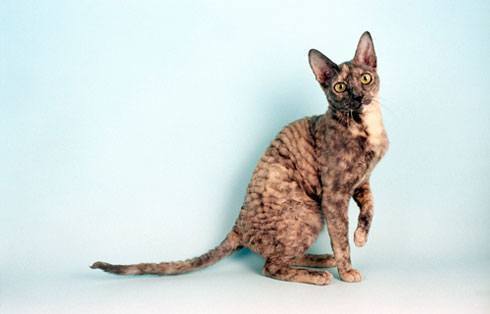
- Adult Weight: 6-8 pounds
- Height: 7-10 inches
- Lifespan: 9-13 years
- Physical Characteristics: Short, crimped hair; Colors include White, Blue, Black, Cream, Red, Brown, Frost, Platinum, Fawn, Chocolate, Chestnut, Cinnamon, Lavender, Champagne, Seal; Patterns maybe Solid color, Tortoiseshell, Bicolor, Tricolor/Calico, Tabby, Ticking, Smoke, Points, Shaded; Stands high on legs with upward curved backbone
In 1950 in Cornwall, England, the first Cornish rex kitten was born. He was the result of a spontaneous mutation, born of a barn cat and an unknown mate. In 1957, a breeding pair of Cornish rex that was directly related to this first kitten was imported into the United States. The Cornish rex was officially recognized in the United States in 1967 and has since become more popular in the United States than it is in England.
At first, breeders believed that the curly coat of both the Cornish rex and the Devon rex might be related and the two could be bred to each other. This breeding was attempted but the resulting kittens all had straight coats. This result happened every time the breeding was tried, so the curly-coated cats were determined to be two distinct breeds.
The Cornish Rex is a small to medium-sized cat who stands high on her legs, making the breed appear larger. Looked at from the side, the underside of the body follows the upward curve of backbone forming an upward curve. Because of the slender build this breed may feel petite, but this cat is athletic and not at all fragile.
The Cornish Rex has a small, narrow head with large ears and eyes that look large in comparison to the size of the head. They has a Roman nose, a strong chin, and long, slender legs and a long flexible tail. The coat of the Cornish Rex is unique among cats and is silky and soft but forms into waves that look a bit like corn rows.
The Cornish Rex loves to be right next to their owner and must have some time together daily. Many Cornish Rex cats can be taught to walk on a leash in order to spend more time with their human outdoors. This breed is agile and loves to jump, run, play and should have interactive exercise as well.
#8 Siamese
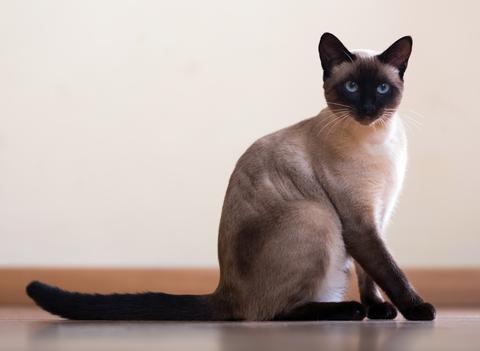
- Adult Weight: 8-12 pounds
- Height: 6-10 inches
- Lifespan: 8-12 years
- Physical Characteristics: Colors can be Chocolate, Seal, Lilac, Blue, Red, Cream, Fawn, Cinnamon; smooth, short hair; head is a long triangle with tall ears; slender muscular body
The first Siamese cats in Europe were a gift from the King of Siam to the English consulate general in Bangkok, in the late 1800s. The first Siamese cat in the United States was also a gift from the King of Siam to a friend. In the late 1890s and early 1900s, Siamese cats were imported into North America from Britain, France, Japan, and Siam. The Siamese remained somewhat rare until after World War II, when they quickly became very popular.
The Siamese is a cat of extremes with a long, triangular head and tall ears set on the head to continue the triangle. The nose is long and straight, accented by eyes that are almond shape and bright blue. The legs are long and slender while the tail is long and tapers to a point.
The Siamese coat is short, glossy and sits close to the body. The color of the fur on the ears, tail and feet is a darker color than that of the body, and this darker color gradually blends into the lighter color. The face also shows a mask of the same deeper point color and covers the face, surrounds the eyes and covers the whisker pads.
The Siamese cat is not only known for its beauty but also its intelligence. This breed can be trained to walk on a leash only if that particular cat wants. Siamese are known to be headstrong and do what they want. They are an affectionate cat who is dedicated to their owner but demands affection and play time.
#9 Abyssinian
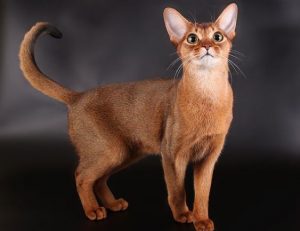
- Adult Weight: 8-12 pounds
- Height: 5-10 inches
- Lifespan: 9-13 years
- Physical Characteristics: Short, silky, smooth hair; Colors include Ruddy, Red, Blue, Fawn, Cinnamon; Long body and nicely developed muscles; Large ears sit tilted forward on head
While the Abyssinian cat is considered to be the breed traced directly to the Nile Valley, and was actually developed in Great Britain. In the 1860s, a cat was brought to Britain by Lord Robert Napier following a military expedition to Abyssinia. This cat was named Zulu and she was the foundation of the beautiful breed known today as the Abyssinian. The unique ticking pattern on the coat reminded people of the coat of the wild rabbit. To maintain this characteristic, Zulu was bred to random cats that carried a similar coat and the Abyssinian breed was created. The breed itself was extremely popular and Abyssinian cats were soon being bred throughout Europe and in the United States and Canada.
The Abyssinian is a medium-sized cat with a long body and nicely developed muscles. They have a gentle dip in their triangular head and large ears sit tilted forward on the head, giving an alert, look. The eyes look large on the face, and often show the alertness of the breed.
The coat of the Abyssinian is short and the majority of the fur has bands of color on each individual hair, with the coat looking darker along the spine. The color on the body softens and lightens under the neck and the underside of the cat and the insides of her legs.
The Abyssinian is an active breed that will play with their own toys for hours, but also enjoy interactive play with their owners. They do like to chat in a soft, quiet voice and are very affectionate with their family members. The Abyssinian likes to be combed or pet and will show their appreciation with a long purr.
#10 ToyBob
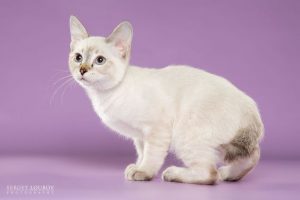
- Adult Weight: 4-7 pounds
- Height: 4-8 inches
- Lifespan: 10-15 years
- Physical Characteristics: Semi-long, silky hair; Kinked, bobbed tail; Rounded cheekbones that curve inwards; Moderate muscle tone and good bone structure; Colors can be Chocolate, Seal, Lilac, Blue, Red, Cream, Fawn, Cinnamon
The Toybob breed is very young breed and their first records go back to 1988 in Russia. Only about 8 years this breeds was first officially registered with TICA (The International Cat Association). Toybobs North American journey began in 2012 when breeders who are passionate about Toybob’s began following the foot steps to give this breed recognition worldwide.
The Toybob is thought to be the smallest of all breeds with full grown adult cats being the size of 3 to 6 month old kittens. They have a moderate nice proportions, muscle tone, and good bone structure. The most striking physical trait, other than their small size, is their short, bobbed kinked tail. This is a result of a spontaneous, natural mutation they inherited from the Russian feral cats they have in their ancestry.
Toybobs are affectionate, intelligent, gentle and cuddly. They do take time to warm up to strangers, but they are devoted to their owners. They are active, and playful by nature without being hyperactive and overly demanding. Toybobs enjoy being with their owners as much as possible and other house pets with the same size and energy level.
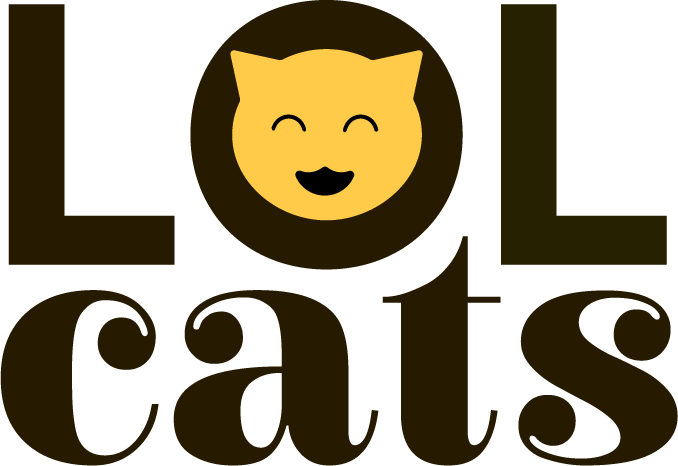


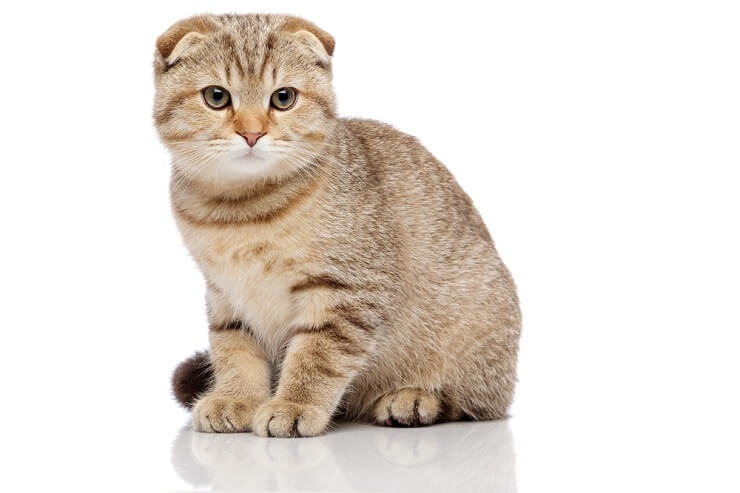
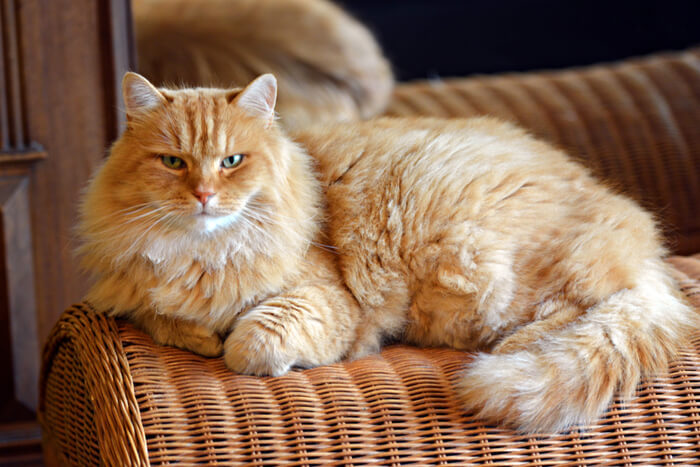
Shawn
How much for a munchkin cat small one with different colors